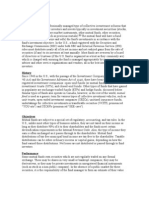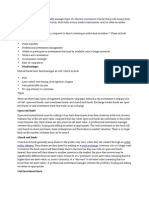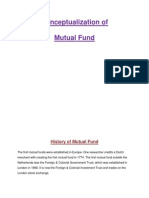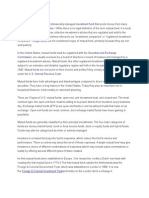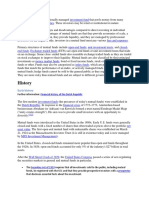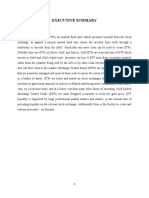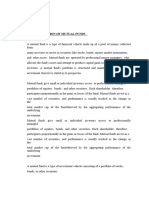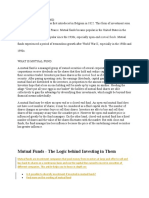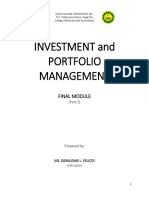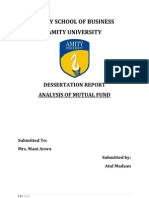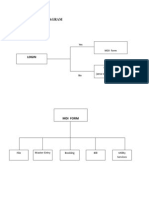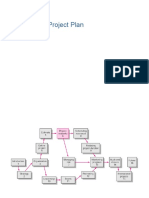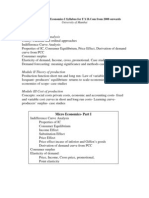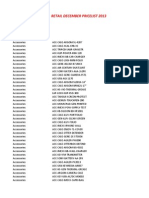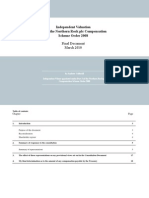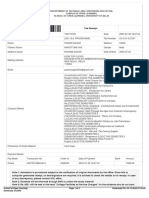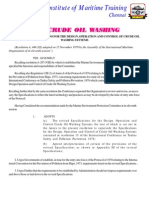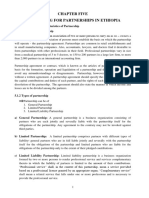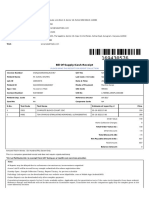MUTUAL FUNDS A mutual fund is a professionally managed type of collective investment scheme that pools money from many
investors to buy stocks, bonds, short-term money market instruments, and/or other securities.
Types of mutual funds
There are three basic types of registered investment companies defined in the Investment Company Act of 1940: open-end funds, unit investment trusts (UITs); and closed-end funds. exchange-traded funds (ETFs)are open-end funds or unit investment trusts that trade on an exchange.
[edit] Open-end funds
Open-end mutual funds must be willing to buy back their shares from their investors at the end of every business day at the net asset value computed that day. Most open-end funds also sell shares to the public every business day; these shares are also priced at net asset value. A professional investment manager oversees the portfolio, buying and selling securities as appropriate. The total investment in the fund will vary based on share purchases, redemptions and fluctuation in market valuation.
[edit] Closed-end funds
Closed-end funds generally issue shares to the public only once, when they are created through an initial public offering. Their shares are then listed for trading on a stock exchange. Investors who no longer wish to invest in the fund cannot sell their shares back to the fund (as they can with an open-end fund). Instead, they must sell their shares to another investor in the market; the price they receive may be significantly different from net asset value. It may be at a "premium" to net asset value (meaning that it is higher than net asset value) or, more commonly, at a "discount" to net asset value (meaning that it is lower than net asset value). A professional investment manager oversees the portfolio, buying and selling securities as appropriate.
[edit] Unit investment trusts
Unit investment trusts or UITs issue shares to the public only once, when they are created. Investors can redeem shares directly with the fund (as with an open-end fund) or they may also be able to sell their shares in the market. Unit investment trusts do not have a professional investment manager. Their portfolio of securities is established at the creation of the UIT and does not change. UITs generally have a limited life span, established at creation.
[edit] Exchange-traded funds
Main article: Exchange-traded fund
�A relatively recent innovation, the exchange-traded fund or ETF is often structured as an open-end investment company, though ETFs may also be structured as unit investment trusts, partnerships, investments trust, grantor trusts or bonds (as an exchange-traded note). ETFs combine characteristics of both closed-end funds and open-end funds. Like closed-end funds, ETFs are traded throughout the day on a stock exchange at a price determined by the market. However, as with open-end funds, investors normally receive a price that is close to net asset value. To keep the market price close to net asset value, ETFs issue and redeem large blocks of their shares with institutional investors. Most ETFs are index funds.
History
The first mutual funds were established in Europe. One researcher credits a Dutch merchant with creating the first mutual fund in 1774.[5] The first mutual fund outside the Netherlands was the Foreign & Colonial Government Trust, which was established in London in 1868. It is now the Foreign & Colonial Investment Trust and trades on the London stock exchange.[6] Mutual funds were introduced into the United States in the 1890s.[7] They became popular during the 1920s. These early funds were generally of the closed-end type with a fixed number of shares which often traded at prices above the value of the portfolio.[8] The first open-end mutual fund with redeemable shares, was established on March 21, 1924. This fund, the Massachusetts Investors Trust, is now part of the MFS family of funds. However, closed-end funds remained more popular than open-end funds throughout the 1920s. By 1929, open-end funds accounted for only 5% of the industry's $27 billion in total assets.[9] After the stock market crash of 1929, Congress passed a series of acts regulating the securities markets in general and mutual funds in particular. The Securities Act of 1933 requires that all investments sold to the public, including mutual funds, be registered with the Securities and Exchange Commission (SEC) and that they provide prospective investors with a prospectus that discloses essential facts about the investment. The Securities and Exchange Act of 1934 requires that issuers of securities, including mutual funds, report regularly to their investors; this act also created the Securities and Exchange Commission, which is the principal regulator of mutual funds. The Revenue Act of 1936 established guidelines for the taxation of mutual funds, while the Investment Company Act of 1940 governs their structure. When confidence in the stock market returned in the 1950s, the mutual fund industry began to grow again. By 1970, there were approximately 360 funds with $48 billion in assets.[10] The introduction of money market funds in the high interest rate environment of the late 1970s boosted industry growth dramatically. The first retail index fund, First 2
�Index Investment Trust, was formed in 1976 by The Vanguard Group, headed by John Bogle; it is now called the Vanguard 500 Index Fund and is one of the world's largest mutual funds, with more than $100 billion in assets as of January 31, 2011.[11] Fund industry growth continued into the 1980s and 1990s, as a result of three factors: a bull market for both stocks and bonds, new product introductions (including tax-exempt bond, sector, international and target date funds) and wider distribution of fund shares.[12] Among the new distribution channels were retirement plans. Mutual funds are now the preferred investment option in certain types of fast-growing retirement plans, specifically in 401(k) and other defined contribution plans and in individual retirement accounts (IRAs), all of which surged in popularity in the 1980s. Total mutual fund assets fell in 2008 as a result of the credit crisis of 2008. At the end of 2010, there were 7,581 mutual funds in the United States with combined assets of $11.8 trillion, according to the Investment Company Institute (ICI), a national trade association of investment companies in the United States. The ICI reports that worldwide mutual fund assets were $4.7 trillion on the same date
Advantages of mutual funds
Mutual funds have advantages compared to direct investing in individual securities.[3] These include:
Increased diversification Daily liquidity Professional investment management Ability to participate in investments that may be available only to larger investors Service and convenience Government oversight Ease of comparison
Disadvantages of mutual funds
Mutual funds have disadvantages as well, which include
Fees Less control over timing of recognition of gains Less predictable income No opportunity to customize
�MUTUAL FUND HISTORY IN INDIA
The Evolution The formation of Unit Trust of India marked the evolution of the Indian mutual fund industry in the year 1963. The primary objective at that time was to attract the small investors and it was made possible through the collective efforts of the Government of India and the Reserve Bank of India. The history of mutual fund industry in India can be better understood divided into following phases: Phase 1. Establishment and Growth of Unit Trust of India - 1964-87 Unit Trust of India enjoyed complete monopoly when it was established in the year 1963 by an act of Parliament. UTI was set up by the Reserve Bank of India and it continued to operate under the regulatory control of the RBI until the two were de-linked in 1978 and the entire control was transferred in the hands of Industrial Development Bank of India (IDBI). UTI launched its first scheme in 1964, named as Unit Scheme 1964 (US-64), which attracted the largest number of investors in any single investment scheme over the years. UTI launched more innovative schemes in 1970s and 80s to suit the needs of different investors. It launched ULIP in 1971, six more schemes between 1981-84, Children's Gift Growth Fund and India Fund (India's first offshore fund) in 1986, Mastershare (India's first equity diversified scheme) in 1987 and Monthly Income Schemes (offering assured returns) during 1990s. By the end of 1987, UTI's assets under management grew ten times to Rs 6700 crores. Phase II. Entry of Public Sector Funds - 1987-1993 The Indian mutual fund industry witnessed a number of public sector players entering the market in the year 1987. In November 1987, SBI Mutual Fund from the State Bank of India became the first non-UTI mutual fund in India. SBI Mutual Fund was later followed by Canbank Mutual Fund, LIC Mutual Fund, Indian Bank Mutual Fund, Bank of India Mutual Fund, GIC Mutual Fund and PNB Mutual Fund. By 1993, the assets under management of the industry increased seven times to Rs. 47,004 crores. However, UTI remained to be the leader with about 80% market share. 1992-93 UTI Public Sector Total Amount Mobilised 11,057 1,964 13,021 Assets Under Management 38,247 8,757 47,004 Mobilisation as % of gross Domestic Savings 5.2% 0.9% 6.1%
Phase III. Emergence of Private Secor Funds - 1993-96 The permission given to private sector funds including foreign fund management 4
�companies (most of them entering through joint ventures with Indian promoters) to enter the mutal fund industry in 1993, provided a wide range of choice to investors and more competition in the industry. Private funds introduced innovative products, investment techniques and investor-servicing technology. By 1994-95, about 11 private sector funds had launched their schemes. Phase IV. Growth and SEBI Regulation - 1996-2004 The mutual fund industry witnessed robust growth and stricter regulation from the SEBI after the year 1996. The mobilisation of funds and the number of players operating in the industry reached new heights as investors started showing more interest in mutual funds. Investors' interests were safeguarded by SEBI and the Government offered tax benefits to the investors in order to encourage them. SEBI (Mutual Funds) Regulations, 1996 was introduced by SEBI that set uniform standards for all mutual funds in India. The Union Budget in 1999 exempted all dividend incomes in the hands of investors from income tax. Various Investor Awareness Programmes were launched during this phase, both by SEBI and AMFI, with an objective to educate investors and make them informed about the mutual fund industry. In February 2003, the UTI Act was repealed and UTI was stripped of its Special legal status as a trust formed by an Act of Parliament. The primary objective behind this was to bring all mutual fund players on the same level. UTI was re-organized into two parts: 1. The Specified Undertaking, 2. The UTI Mutual Fund Presently Unit Trust of India operates under the name of UTI Mutual Fund and its past schemes (like US-64, Assured Return Schemes) are being gradually wound up. However, UTI Mutual Fund is still the largest player in the industry. In 1999, there was a significant growth in mobilisation of funds from investors and assets under management which is supported by the following data: GROSS FUND MOBILISATION (RS. CRORES) FROM 01-April-98 01-April-99 01-April-00 01-April-01 01-April-02 01-Feb.-03 01-April-03 01-April-04 01-April-05 TO 31-March-99 31-March-00 31-March-01 31-March-02 31-Jan-03 31-March-03 31-March-04 31-March-05 31-March-06 UTI 11,679 13,536 12,413 4,643 5,505 * PUBLIC SECTOR 1,732 4,039 6,192 13,613 22,923 7,259* 68,558 1,03,246 1,83,446 PRIVATE SECTOR 7,966 42,173 74,352 1,46,267 2,20,551 58,435 5,21,632 7,36,416 9,14,712 TOTAL 21,377 59,748 92,957 1,64,523 2,48,979 65,694 5,90,190 8,39,662 10,98,158
�ASSETS UNDER MANAGEMENT (RS. CRORES) AS ON UTI PUBLIC SECTOR PRIVATE SECTOR TOTAL 8,292 6,860 68,472 31-March-99 53,320
Phase V. Growth and Consolidation - 2004 Onwards The industry has also witnessed several mergers and acquisitions recently, examples of which are acquisition of schemes of Alliance Mutual Fund by Birla Sun Life, Sun F&C Mutual Fund and PNB Mutual Fund by Principal Mutual Fund. Simultaneously, more international mutual fund players have entered India like Fidelity, Franklin Templeton Mutual Fund etc. There were 29 funds as at the end of March 2006. This is a continuing phase of growth of the industry through consolidation and entry of new international and private sector players.
�HDFC MUTUAL FUND HDFC Mutual Fund has been one of the best performing mutual funds in the last few years. HDFC Asset Management Company Limited (AMC) functions as an Asset Management Company for the HDFC Mutual Fund. HDFC Asset Management Company Ltd (AMC) was incorporated under the Companies Act, 1956, on December 10, 1999, and was approved to act as an Asset Management Company for the HDFC Mutual Fund by SEBI vide its letter dated July 3, 2000. AMC is a joint venture between housing finance giant HDFC and British investment firm Standard Life Investments Limited. It conducts the operations of the Mutual Fund and manages assets of the schemes, including the schemes launched from time to time. As of Aug 2006, the fund has assets of Rs.25,892 crores under management. IN 2003, following a decision by the Zurich Insurance Company (ZIC), the Sponsor of Zurich India Mutual Fund, to divest its asset management business in India, AMC had entered into an agreement with ZIC to acquire the asset management business. Consequently, all the schemes of Zurich Mutual Fund in India had been transferred to HDFC Mutual Fund and renamed as HDFC schemes. Vision Statement Here is a list of mutual funds of HDFC which includes Equity Funds, Balanced Funds and Debt Funds.
Latest NAV Scheme Name HDFC High Interest Fund - Short Term PlanDividend Option HDFC High Interest Fund - Short Term PlanGrowth Option NAV (Net Asset Value) Date
10.5829 02-Sep-2011 20.0625 02-Sep-2011
�HDFC Income Fund-Dividend HDFC Income Fund-Growth HDFC MF Monthly Income Plan-Long Term Plan-Growth Option HDFC MF Monthly Income Plan-Long Term Plan-Monthly Dividend Option HDFC MF Monthly Income Plan-Long Term Plan-Quarterly Dividend Option HDFC MF Monthly Income Plan-Short Term Plan-Growth Option HDFC MF Monthly Income Plan-Short Term Plan-Monthly Dividend Option HDFC MF Monthly Income Plan-Short Term Plan-Quarterly Dividend Option HDFC Short Term Plan-DIVIDEND HDFC Short Term Plan-GROWTH HDFC Capital Builder Fund - Dividend Option HDFC Capital Builder Fund - Growth Option HDFC Core and Satellite Fund - DIVIDEND HDFC Core and Satellite Fund - GROWTH HDFC Equity Fund - Dividend Option HDFC Equity Fund - Growth Option HDFC Growth Fund - Dividend Option HDFC Growth Fund - Growth Option HDFC Index Fund-Nifty Plan(FV Rs 10.326) HDFC Index Fund-Sensex Plus( FV-Rs32.161) HDFC Index FundSensex Plan( FV Rs 32.161) HDFC Premier Multi-Cap Fund-Dividend HDFC Premier Multi-Cap Fund-Growth HDFC Top 200 Fund - Dividend Option HDFC Top 200 Fund - Growth Option HDFC Balanced Fund - Dividend Option HDFC Balanced Fund - Growth Option HDFC Children Gift Fund-Investment HDFC Children Gift Fund-Savings
11.1977 02-Sep-2011 23.363 02-Sep-2011 23.1803 02-Sep-2011 12.6887 02-Sep-2011 13.1497 02-Sep-2011 17.427 02-Sep-2011 11.0587 02-Sep-2011 11.4348 02-Sep-2011 10.3203 02-Sep-2011 19.672 02-Sep-2011 22.227 02-Sep-2011 101.989 02-Sep-2011 18.663 02-Sep-2011 36.061 02-Sep-2011 42.341 02-Sep-2011 250.654 02-Sep-2011 28.214 02-Sep-2011 79.605 02-Sep-2011 43.767 02-Sep-2011 210.6476 02-Sep-2011 140.0536 02-Sep-2011 13.846 02-Sep-2011 27.077 02-Sep-2011 41.307 02-Sep-2011 190.774 02-Sep-2011 19.419 02-Sep-2011 55.334 02-Sep-2011 43.105 02-Sep-2011 23.634 02-Sep-2011 8
�HDFC Prudence Fund - Dividend Option HDFC Prudence Fund - Growth Option HDFC Long Term Advantage Fund - Dividend Option HDFC Long Term Advantage Fund - Growth Option HDFC TaxSaver-Dividend Plan HDFC TaxSaver-Growth Plan HDFC ARBITRAGE FUND RETAIL PLAN DIVIDEND OPTION HDFC ARBITRAGE FUND RETAIL PLAN GROWTH OPTION HDFC ARBITRAGE FUND RETAIL PLAN QUARTERLY DIVIDEND OPTION HDFC ARBITRAGE FUND WHOLESALE PLAN GROWTH OPTION HDFC ARBITRAGE FUND WHOLESALE PLAN DIVIDEND OPTION HDFC ARBITRAGE FUND WHOLESALE PLAN QUARTERLY DIVIDEND OPTION HDFC LONG TERM EQUITY FUND-Dividend HDFC LONG TERM EQUITY FUND-Growth
28.063 02-Sep-2011 205.862 02-Sep-2011 33.327 02-Sep-2011 127.397 02-Sep-2011 54.417 02-Sep-2011 214.191 02-Sep-2011 10.128 02-Sep-2011 12.844 02-Sep-2011 10.557 02-Sep-2011 12.964 02-Sep-2011 10 02-Sep-2011 10.413 02-Sep-2011 12.692 10-Mar-2011 15.342 10-Mar-2011






